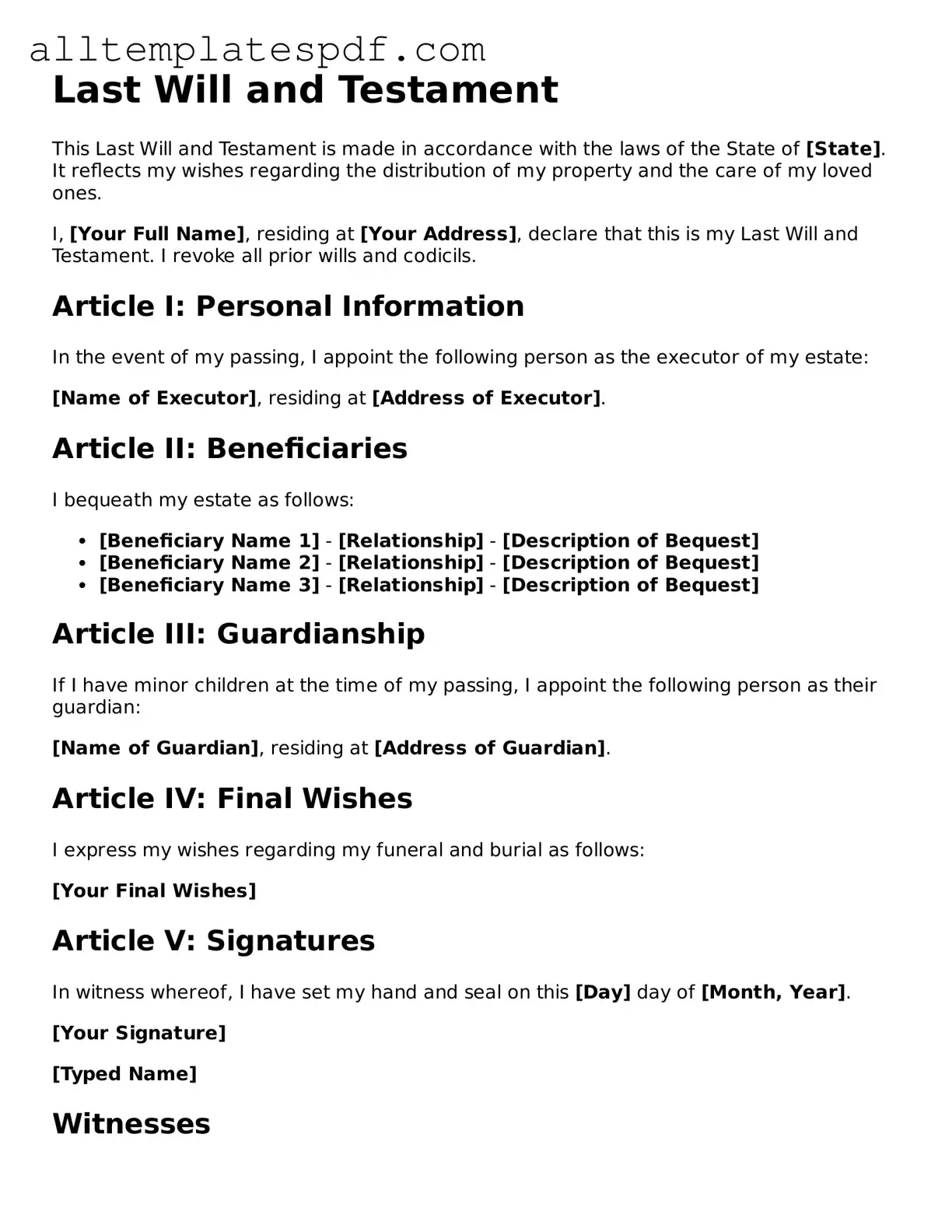Creating a Last Will and Testament is an important step in ensuring that your wishes are honored after your passing. However, many people make mistakes when filling out this crucial document. One common error is not being specific about the distribution of assets. Vague language can lead to confusion and disputes among heirs. It is essential to clearly state who receives what to avoid complications later.
Another frequent mistake is failing to update the will after major life events. Changes such as marriage, divorce, or the birth of a child can significantly impact how you want your assets distributed. If the will is not updated, it may not reflect your current wishes, leading to unintended consequences.
Many individuals also neglect to sign their will properly. A will must be signed in accordance with state laws to be considered valid. This often includes having witnesses present during the signing. Skipping this step can render the document ineffective, leaving your estate to be distributed according to state laws instead of your preferences.
Additionally, people sometimes forget to appoint an executor. This person will be responsible for managing your estate after your death. Choosing someone trustworthy and capable is crucial. If no executor is named, the court may appoint someone, which may not align with your wishes.
Another mistake is not considering the tax implications of your estate. Some individuals overlook how taxes may affect their heirs. It is wise to consult with a financial advisor or attorney to understand potential tax burdens and how to mitigate them.
People also often fail to communicate their wishes to their loved ones. A will is only one part of the planning process. Discussing your intentions with family members can help prevent misunderstandings and conflicts. Open communication fosters a sense of clarity and peace among loved ones.
Finally, some individuals may attempt to create a will without proper guidance. While templates and online forms are available, they may not account for specific state laws or personal circumstances. Seeking professional assistance can help ensure that the will is valid and reflects your true intentions.
